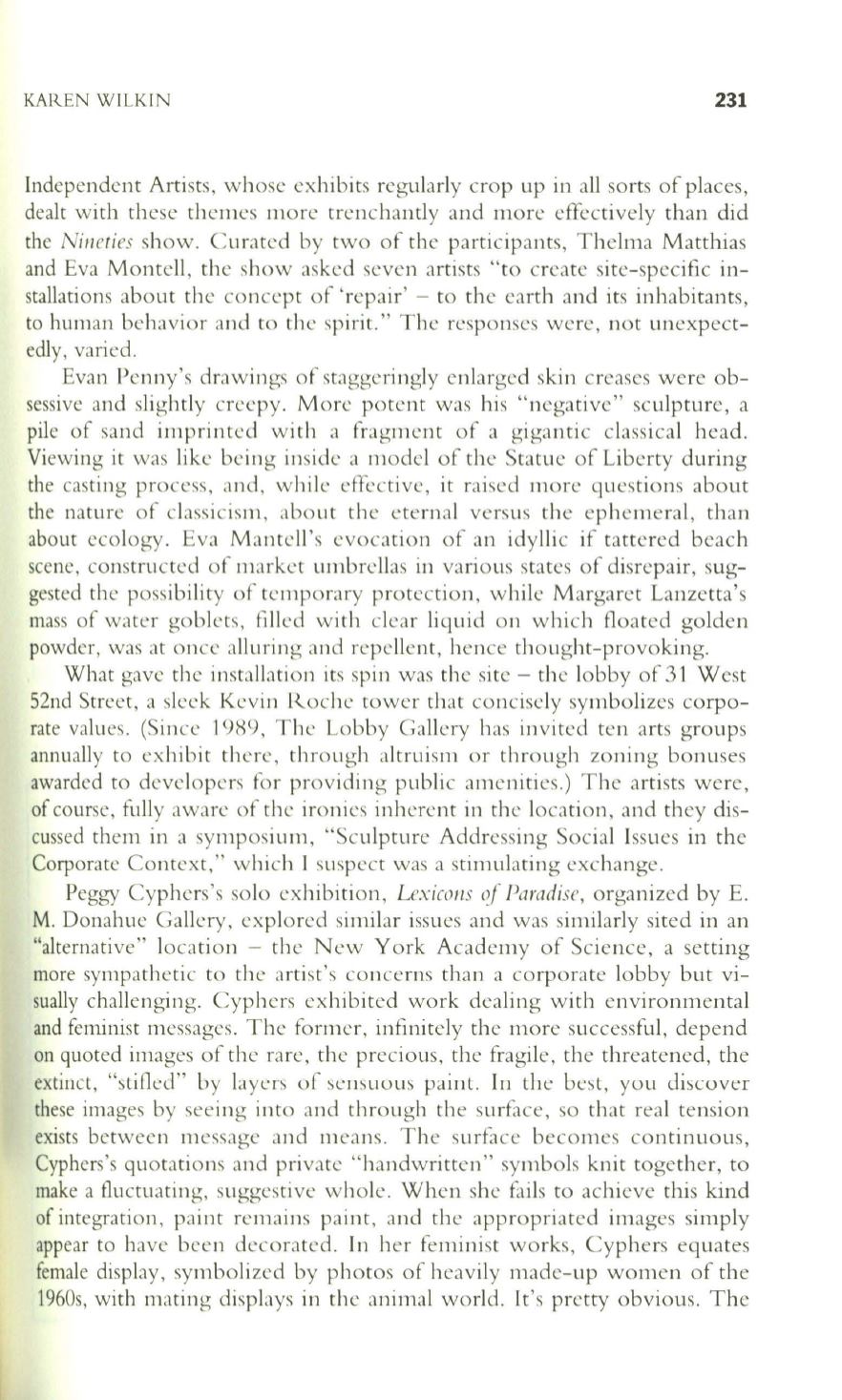
KAREN WILKIN
231
Independent Artists, whose exhibits regularly crop up in all sorts of places,
dealt with these themes more trenchantly and more effectively than did
the
Nil/eties
show. Curated by two of the participants, Thelma Matthias
and Eva Montell, the show asked seven artists "to create site-specific in–
stallations about the concept of 'repair' - to the earth and its inhabitants,
to human behavior and to the spirit." The responses were, not unexpect–
edly, varied.
Evan Penny's drawings of staggeringly enlarged skin creases were ob–
sessive and slightly creepy. More potent was his "negative" sculpture, a
pile of sand imprinted with a fragment of a gigantic classical head.
Viewing it was like being inside a model of the Statue of Liberty during
the casting process, and, while effective, it raised more questions about
the nature of classicism, about the eternal versus the ephemeral, than
about ecology. Eva Mantell's evocation of an idyllic if tattered beach
scene, constructed of market umbrellas in various states of disrepair, sug–
gested the possibility of temporary protection, while Margaret Lanzetta's
mass of water goblets, filled with clear liquid on which floated golden
powder, was at once alluring and repellent, hence thought-provoking.
What gave the installation its spin was the site - the lobby of31 West
52nd Street, a sleek Kevin Roche tower that concisely symbolizes corpo–
rate values. (Since
1989,
The Lobby Gallery has invited ten arts groups
annually
to
exhibit there, through altruism or through zoning bonuses
awarded
to
developers for providing public amenities.) The artists were,
of course, fully aware of the ironies inherent in the location, and they dis–
cussed them in a symposium, "Sculpture Addressing Social Issues in the
Corporate Context," which I suspect was a stimulating exchange.
Peggy Cyphers's solo exhibition,
Lexicons
of
Paradise,
organized by
E.
M.
Donahue Gallery, explored similar issues and was similarly sited in an
"alternative" location - the New York Academy of Science, a setting
more sympathetic to the artist's concerns than a corporate lobby but vi–
sually challenging. Cyphers exhibited work dealing with environmental
and feminist messages. The former, infinitely the more successful, depend
on quoted images of the rare, the precious, the fragile, the threatened, the
extinct, "stifled" by layers of sensuous paint. In the best, you discover
these images by seeing into and through the surface, so that real tension
exists between message and means. The surface becomes continuous,
Cyphers's quotations and private "handwritten" symbols knit together, to
make a fluctuating, suggestive whole. When she fails to achieve this kind
of integration, paint remains paint, and the appropriated images simply
appear to have been decorated.
In
her feminist works, Cyphers equates
female display, symbolized by photos of heavily made-up women of the
1960s, with mating displays in the animal world. It's pretty obvious. The


